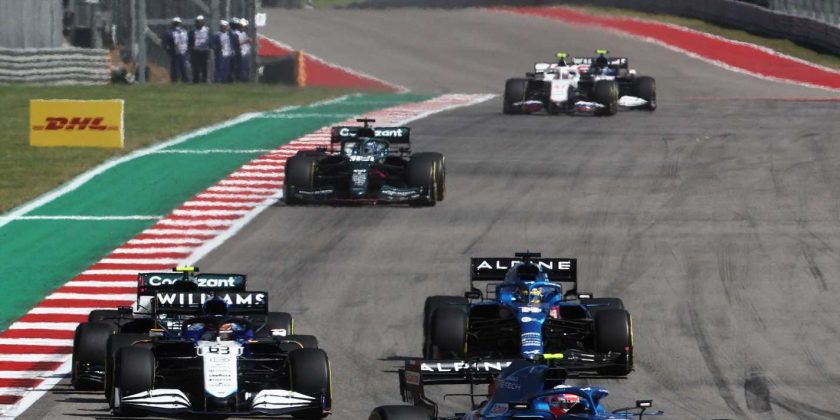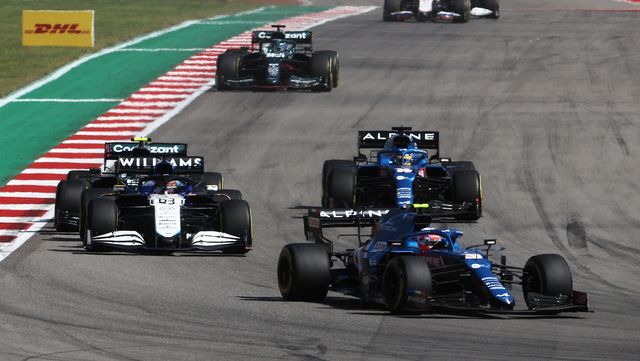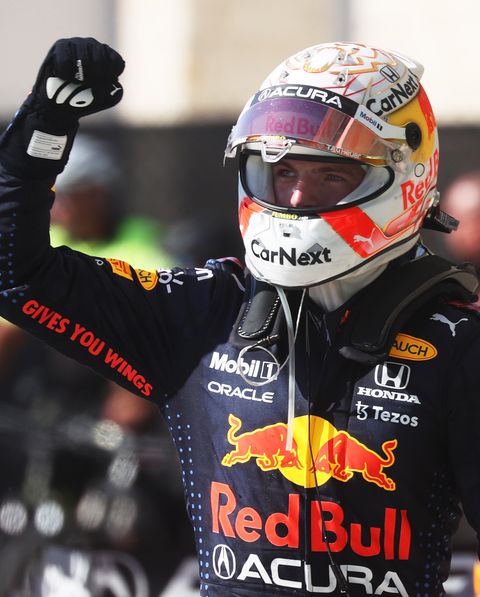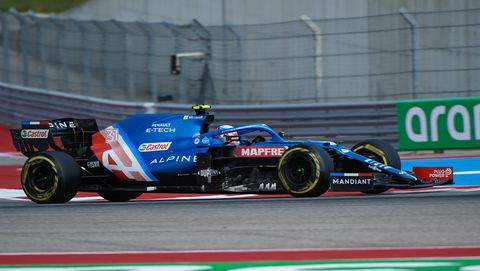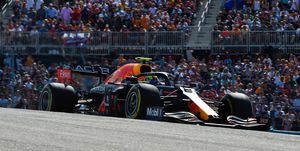With five races remaining in the 2021 Formula 1 season, it’s a two-team and two-driver race for the championship.
And, unfortunately for fans of the other eight teams and other 18 drivers, that’s nothing new.
Mercedes and Red Bull have figuratively, OK literally, once again lapped the rest of the field this season. Max Verstappen and Lewis Hamilton will likely battle it out for the top spot the rest of the season, but only third-place Valtteri Bottas is still mathematically alive in the drivers’ championship—and even Bottas could be mathematically eliminated by time the checkered flag flies in the next race at Mexico City on November 7.
It’s been more than a decade since the third place team in the final standings was within even 50 points of the champion in the F1 standings at season’s end. In 2010, Red Bull (Sebastian Vettel and Mark Webber), Ferrari (Fernando Alonso) and Mercedes (Lewis Hamilton) all finished within 16 points of the championship. Since then, however, it’s been a one- or two-driver race with everyone else battling for “best of the rest” honors.
The average gap between the first- and third-place driver in the final standings over the past 10 years is 127 points. A race win is worth 25 points (1 bonus point awarded to fastest lap of the race). You get the picture. That’s a significant gap, for sure.
This year, the gap from first to third is already 102.5 points with five races remaining. The gap is on pace to easily exceed the average gap of the past decade.
Wait.
Wasn’t this the year that a team budget cap was supposed to bring the field closer together? Wasn’t this the year we were supposed to see more teams fighting for wins?Instead, it’s been more of the same, as Verstappen and Hamilton have combined for 13 wins in the first 17 races. In one of those four losses, Verstappen and Hamilton crashed each other out.
Sorry, F1 isn’t going to turn into NASCAR or IndyCar anytime soon. Don’t hold your breath waiting for a season where five or six drivers are still in the thick of a championship with legitimate chances at a title going into the final two or three races of the season.
It’s going to take time before the mid-packers in F1 close the gap on Mercedes and Red Bull, admit a pair of team bosses who have gotten used to looking up at the megateams in the standings. And there’s some obvious reasons, say team principals at Aston Martin and Alpine.
Take the 2021 cars, for starters.
“These cars were originally designed without a cost cap, the ones that you see racing now,” said Aston Martin team principal Otmar Szafnauer. “Then we froze (the regs) for this season, apart from some aerodynamic changes made by the FIA, because of COVID. So, the cars that are racing now really the remnants of ‘spend as much as you want.’
“Next year’s car (has) totally different technical (regulations) and is being developed under a cost cap, as well as under a cap where we reduce the dyno times and aerodynamic runs. So, I think that in itself should bring competition closer together. Let’s see what happens next year, it’s not that far off. I do believe that come 2022 the field will be much closer.”
The current team budget cap of $145 million (a cap that has several loopholes and exemptions) has meant the sport’s big three of Mercedes, Red Bull and Ferrari have had to tighten their belts. All three are believed to have been running with budgets close to, if not in excess of $400 million (actual figures have long been a closely guarded secret). Despite the cutbacks, those teams will long be reaping the benefits of years of outspending by more than double the budgets of the second- and third-tier teams.
“They’ve spent a lot of money in the past putting the infrastructure in place,” said Szafnauer. “That all has a big cumulative affect. You just add to it, add to it, add to it—better simulation facilities, better dynos, better wind tunnels, upgrading the wind tunnels, all of that accumulates.”
Then there’s the manpower part of the equation.
“If you compare us, we’re at about 575 employees now and we’re growing,” Szafnaur said. “We started three years ago, and we were at 400. We’ve added. Mercedes is still at 800 to 900 employees. So, they have almost twice the staff that we have, plus the they have all that infrastructure that they’ve accumulated over time.
“Now, where they spend their money and how much money they spend (going forward), that’s capped. But they have the infrastructure and they have the human resources that we are now still working on getting ourselves but we don’t have yet.”
Alpine racing director Laurent Rossi agrees that catching up to the big boys and racing head-to-head with the likes of Mercedes and Red Bull will take tame.
“The cost cap is going to help,” Rossi said. “Tremendous. But the amount that has been spent in the past 10, 15 years won’t be cancelled out, erased, right away. Those who have a better wind tunnel, a better simulator, better models will still have that at the beginning (of the next generation F1 cars in 2022).
“The difference is (Mercedes and Red Bull) won’t be able to throw money at problems the way they used to, spend twice more the amount, and all the brainpower and whatever. Still, (the cap) will help people to catch up because of more teams will get a chance, but there will always be a little bit of a difference. Maybe we’ll get to the point by say 2030, this will be no longer a problem, but at the beginning it will always be easier to be a Mercedes or a Red Bull.”
Aside from the team budget cap, Rossi is also pleased with the sport’s new prize fund distribution formulas forged through by Liberty Media that guarantees a more equitable split of the pie. He says that will go a long way to stabilizing the sport.
“If the costs are capped, the revenue is uncapped in a way,” Rossi said. “Everyone is spending the same amount of money and no one is really losing their shirt. Maybe the next year, it’s another team winning, it’s a smaller team, and the nine other that don’t win are still OK. They’re not going to be at risk of disappearing so they can build for the medium or long term.
“That gives you, like American football for instance. Every team can win, not just the giants (Editor’s note: We don’t think he meant the New York Giants). And that’s pretty cool.”
Source: Read Full Article
